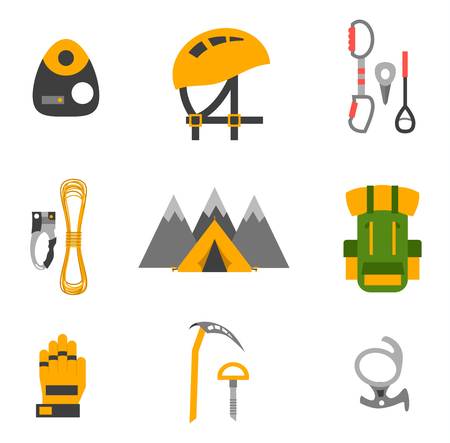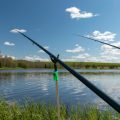Introduction to Kayaking at UK Campsites
Kayaking has become an integral part of the camping experience across the United Kingdom, blending adventure with the tranquillity of nature. The UK’s rich kayaking culture is rooted in its diverse and historic waterways—rivers, lakes, canals, and coastal stretches—that offer a remarkable backdrop for both novices and seasoned paddlers alike. Whether gliding through the serene Lake District, navigating the meandering River Wye, or exploring hidden corners of the Norfolk Broads, there’s a sense of freedom and discovery unique to British waters. Adding kayaking to your camping itinerary not only introduces a physical challenge but also opens up opportunities to observe wildlife and landscapes inaccessible by foot. The varied geography of the UK ensures that every region offers something distinctive: from the crystal-clear lochs of Scotland to the tidal estuaries of Cornwall. What truly sets British waterways apart is their accessibility and deep connection with local heritage—many routes pass ancient castles, charming villages, and sites of natural beauty. For campers seeking both relaxation and adventure, kayaking provides an ideal complement to evenings around the campfire, turning a simple getaway into an unforgettable journey immersed in Britain’s great outdoors.
Essential Gear and Safety for British Waters
Before launching your kayak onto the scenic lakes, winding rivers, or rugged coastline near UK campsites, it’s vital to equip yourself with the right gear and prepare for the ever-changing British weather. Here’s a practical guide to recommended kit, suitable clothing, and key safety considerations specific to local waters.
Recommended Kayaking Kit
| Item | Purpose | UK-Specific Tips |
|---|---|---|
| Kayak (Sit-in or Sit-on-top) | Main vessel for exploring water bodies | Sit-in kayaks offer better protection in cold or windy conditions |
| Paddle (Lightweight, Adjustable) | Efficient propulsion | Consider feathered blades for improved wind resistance |
| Personal Flotation Device (PFD) | Essential safety for all abilities | Choose CE-approved PFDs designed for kayaking, not generic buoyancy aids |
| Dry Bag | Keep essentials dry (phone, maps, snacks) | A must-have given frequent UK showers and splashes |
| Spray Deck (for sit-in kayaks) | Keeps water out of the cockpit | Crucial on exposed lakes or windy days |
| Paddle Leash | Prevents paddle loss in case of capsize or rough water | Highly recommended on tidal estuaries or breezy open water |
| Tow Line/Throw Rope | Assists in rescues or group paddling situations | A wise addition when kayaking in groups or unfamiliar areas |
| First Aid Kit & Whistle | For emergencies on remote stretches of waterway | Pack waterproofed kits and know basic first aid procedures relevant to water activities |
| Map & Compass / GPS Device | Navigational aid, especially on larger lakes and estuaries | Batteries can run out quickly in cold; always carry a paper backup map where possible |
Dressing for the British Weather: What to Wear Kayaking in the UK?
| Layer/Item | Description & Local Advice |
|---|---|
| Base Layer (Moisture-wicking) | Synthetic or merino wool; avoids cotton as it chills when wet—essential year-round due to unpredictable rain/showers. |
| Thermal Mid Layer/Fleece Top | Adds warmth even when damp; ideal for spring/autumn trips or chilly mornings. |
| Paddling Jacket/Cagoule (Waterproof & Windproof) | A must even in summer—keeps wind chill at bay and shields from sudden downpours. |
| Paddling Trousers/Shorts (Quick-drying) | Avoid jeans/heavy fabrics; opt for technical trousers with reinforced seat if possible. |
| Neoprene Gloves/Socks/Shoes | Protect against sharp stones on riverbanks and keep extremities warm. |
| Hat/Cap & Sunglasses (with strap) | Sunscreen is still essential—even under cloudy skies, UV exposure can be significant on open water. |
Safety Considerations Unique to UK Kayaking Conditions
- Tidal Awareness: Many coastal sites around the UK are subject to fast-moving tides. Always check tide tables and local advice before venturing onto estuaries or sea lochs.
- Countryside Code: Respect wildlife and other water users. Follow established access agreements—some inland waterways require a permit.
- Campsite Facilities: Not all campsites have direct kayak launching points. Scout your launch site in advance and ask about drying/storage space for kit.
- Hypothermia Risk: Even in summer, UK waters can be cold. Learn the signs of hypothermia and carry emergency thermal blankets if kayaking remote stretches.
- Weather Monitoring: Sudden changes are common—use apps like the Met Office Weather App for regular updates. If fog descends, stay close to shore and use sound signals where necessary.
Packing Checklist: Don’t Leave Camp Without These!
- PFD & whistle per person
- Paddle leash
- Drysack with spare warm layer
- Sunscreen & sunglasses
- Tide timetable/local maps
- Easily accessible snack bars/liquid
- Charged mobile phone in waterproof pouch
- Sufficient drinking water
- If camping overnight: head torch, extra dry bags, repair tape/li>
A Note on Local Etiquette and Access Rights
The UK’s patchwork of public rights of way means that not all waterways are freely accessible. Always check with local clubs or campsite managers regarding permitted launch points. Treat fellow paddlers, anglers, and wildlife with respect for an enjoyable adventure across Britain’s varied landscapes.
![]()
3. Top Campsites for Kayaking Adventures
When it comes to kayaking in the UK, the diversity of the landscape opens up an incredible range of experiences. Whether you’re after gentle paddles on tranquil lakes or challenging routes along wild coastlines, there’s a perfect spot for every paddler. Below, we highlight some of the most outstanding campsites for kayaking across England, Scotland, Wales, and Northern Ireland—covering rivers, lakes, lochs, and coastal gems.
England: Rivers and Lakes Await
England offers an array of campsites that grant direct access to some of the nation’s best waterways. The Lake District is renowned for its scenic beauty, with campsites around Derwentwater and Windermere making ideal bases for lake kayaking. Down south, Cotswold Water Park provides a network of interconnected lakes suited to all skill levels. For river enthusiasts, camping near the River Wye allows for multi-day journeys through picturesque countryside and quaint villages.
Scotland: Lochs and Rugged Coastlines
Scotland stands out with its dramatic landscapes and legendary lochs. Loch Lomond & The Trossachs National Park boasts numerous campsites with immediate loch access—perfect for exploring secluded bays or island-hopping by kayak. On the coast, sites along the west near Arisaig offer entry points to clear waters and sheltered coves, while those venturing to Isle of Skye can enjoy remarkable sea kayaking amid towering cliffs and wildlife-rich shores.
Wales: Rivers, Reservoirs, and Sea Cliffs
The Welsh countryside is dotted with opportunities for both inland and coastal paddling. Llyn Tegid (Bala Lake) in Snowdonia is a firm favourite, providing extensive space for flatwater exploration from well-equipped campsites. Along the Pembrokeshire Coast, adventure-seekers will find campsites close to launch points where they can discover hidden caves and dramatic rock formations by kayak.
Northern Ireland: Hidden Gems and Coastal Routes
Northern Ireland may be compact but it packs a punch with its kayaking offerings. The Lough Erne system features island-dotted waters perfect for leisurely day trips or overnight excursions from nearby campsites. On the north coast, camping near Ballintoy gives access to sea kayaking routes past the iconic Giant’s Causeway and along rugged cliffs teeming with birdlife.
Paddler’s Note:
Many top-rated campsites cater specifically to kayakers by offering gear storage, slipways, or guided tours. Always check local regulations regarding permits or access rights before launching your kayak—especially in protected areas or private waters.
Insider Tip:
If you’re keen to avoid crowds during peak season, consider lesser-known spots like Rutland Water in England or Loch Morlich in Scotland—both offering excellent facilities with plenty of space for peaceful paddling.
4. Insider Tips from Local Paddlers
When it comes to kayaking across the UK’s diverse campsites and waterways, nothing beats the advice of seasoned local paddlers. Their experience not only helps you uncover hidden gems but also ensures you enjoy a safe and respectful adventure. Below, we share expert insights into lesser-known spots, seasonal considerations, and essential etiquette on British waters.
Hidden Gems: Where Locals Love to Paddle
| Location | Region | Why It’s Special |
|---|---|---|
| Llyn Tegid (Bala Lake) | Wales | Serene mornings, mountain views, less crowded than Snowdonia hotspots |
| River Wye (Glasbury to Symonds Yat) | England/Wales border | Mild current, picturesque woodlands, plenty of riverside camping options |
| Loch Ard | Scotland (Trossachs) | Sheltered waters, wildlife spotting, perfect for beginners and families |
| The Norfolk Broads | East England | Quiet backwaters, historic windmills, abundant birdlife |
Seasonal Insights: Timing Your Trip Right
- Spring: Rivers are fuller from winter rainfall; great for gentle touring but watch for chillier waters.
- Summer: Longer days and warmer temperatures make this peak season. Arrive early to secure prime camping spots near water access.
- Autumn: Fewer crowds and colourful foliage along rivers like the Dart or Tay; check for increased rain affecting river levels.
- Winter: For experienced paddlers only; always check local conditions and be aware of potential flooding or ice in northern regions.
Paddling Etiquette: Respecting Nature & Others
- Avoid disturbing wildlife—especially nesting birds along riverbanks in spring and early summer.
- Yield to anglers and other boats; give a wide berth to rowers and sailing craft.
- If wild camping, follow the Leave No Trace principles: take all litter home and avoid lighting fires unless permitted by campsite rules.
- Check access rights before launching—some private waters require prior permission or a small fee.
Pro Tip from a Veteran Paddler:
“Always greet fellow water users with a wave or a friendly hello—it’s part of what makes paddling in the UK so welcoming!”
5. Planning Your Kayaking Camping Trip
Careful planning is the backbone of any successful kayaking camping adventure across the UK. Here’s a practical guide to ensure your trip is smooth, enjoyable, and safe from start to finish.
Suggestions for Itinerary Planning
When mapping out your journey, consider both your paddling abilities and the unique characteristics of each location. Start by selecting waterways that match your skill level—tranquil lakes like Lake Windermere are ideal for beginners, while more experienced kayakers might opt for tidal rivers or coastal routes such as those in Pembrokeshire. Factor in the distance between campsites, daily paddling goals, and necessary rest days. Always have a Plan B for unpredictable British weather; flexibility is key to making the most of your adventure.
Booking Considerations
In the UK, many campsites near popular kayaking spots require advance booking, especially during summer holidays. Check whether sites allow direct access to water and if there are secure places to store your kayak overnight. Read up on regulations regarding wild camping—Scotland offers more freedom compared to England and Wales, where designated sites are generally required. Reach out to site owners for local advice, as they often provide insights into lesser-known launch points or seasonal river conditions.
Top Apps and Websites Used by British Campers
Campsite Bookings
For finding and booking pitches, Pitchup.com is widely used among British campers, offering detailed filters for waterside locations and facilities. Campsites.co.uk also provides comprehensive listings, including reviews from fellow outdoor enthusiasts.
Route Planning and Navigation
The OS Maps app is invaluable for plotting routes, checking terrain, and tracking your progress with trusted Ordnance Survey data. For tide times and river levels—which are crucial for safe kayaking—apps like Tide Times UK and the RiverApp are highly recommended.
Weather Updates
The famously changeable British weather calls for reliable forecasts; most local kayakers rely on the Met Office Weather app, which delivers accurate updates relevant to your current location.
Insider Tip:
If youre planning an extended trip or heading somewhere remote, connect with local paddling clubs through the British Canoeing website. They often share real-time advice on access points, hazards, and even group paddling opportunities.
With solid research and these digital tools at your fingertips, you’ll be well-equipped to craft a memorable kayaking adventure across some of the UK’s most scenic campsites.
6. Environmental Stewardship and Access Rights
Embarking on a kayaking adventure across UK campsites is not just about the thrill of exploration; it also comes with the responsibility to protect and preserve the unique environments you traverse. Understanding local access rights and adhering to environmental best practices are crucial for every paddler.
Scottish Outdoor Access Code: Freedom with Responsibility
Scotland stands out for its progressive approach to outdoor activities, guided by the Scottish Outdoor Access Code. This framework allows kayakers extensive freedom to access most inland waters, lochs, and rivers, provided their activities are carried out responsibly. The core principles include respecting other people, caring for the environment, and taking responsibility for your own actions. When launching from or camping near water in Scotland, always avoid disturbing wildlife, refrain from damaging banks or vegetation, and be considerate towards landowners and fellow outdoor enthusiasts.
English and Welsh Rights of Way: Navigating Restrictions
In contrast to Scotland, England and Wales operate under a more restricted system regarding waterway access. Rights of way on water are often limited, with many rivers privately owned or managed by organisations such as the Canal & River Trust. Before setting off, consult local bylaws, check if a licence is required (such as from British Canoeing), and respect signage indicating private or protected areas. Always use designated launch points where possible and avoid trespassing on private land.
Minimising Environmental Impact: Best Practices
- Stick to established paths when carrying your kayak to minimise trampling sensitive habitats.
- Keep noise levels low to prevent disturbing wildlife, especially during nesting seasons.
- Avoid dragging boats over riverbanks or through reed beds; lift them where feasible.
- Take all litter home—including biodegradable waste—and leave no trace of your visit.
- If wild camping is permitted, pitch late, leave early, and never light open fires unless explicitly allowed.
Respecting Local Communities
Your presence can impact rural communities near popular campsites and rivers. Park vehicles considerately, support local businesses when possible, and engage politely with locals. Remember that sustainable kayaking ensures future generations can enjoy these wild spaces too.
In summary, whether navigating Scottish lochs or English canals, informed stewardship underpins every successful kayaking trip across UK campsites. By staying mindful of access codes and environmental etiquette, you contribute to the ongoing protection of Britain’s cherished waterways.
7. Conclusion and Further Resources
In summary, the UK is a treasure trove for kayaking enthusiasts, offering everything from tranquil lakes in the Lake District to exhilarating tidal rivers in Wales and Scotland. Whether you’re just beginning or are a seasoned paddler, the diversity of campsites near prime kayaking waters ensures there’s always something new to explore. Remember, each region has its own unique charm and challenges, so planning and preparation are key.
Explore Responsibly
As you embark on your kayaking adventures, it’s essential to respect local wildlife, follow the Countryside Code, and adhere to all safety guidelines. Always check weather conditions, inform someone of your route, and ensure you have appropriate gear. Responsible exploration not only protects the beautiful environments we enjoy but also ensures these locations remain accessible for future generations.
Clubs and Organisations
- British Canoeing – The national governing body for paddlesports in England, providing training, safety advice, and an extensive directory of recommended waterways. britishcanoeing.org.uk
- Canoe Wales – Supporting paddlers across Wales with courses, events, and environmental initiatives. canoewales.com
- Scottish Canoe Association – The hub for Scottish kayaking and canoeing communities; excellent for updates on access rights and water safety. scottishcanoe.org.uk
- Canoe Association of Northern Ireland – For routes, clubs, and events in Northern Ireland. cani.org.uk
Further Reading & Useful Links
- The River Book: A Guide to the Rivers of Britain and Ireland by Chris Stevenson – An excellent reference for trip planning.
- Paddling Britain: 50 Best Canoe Trips and Kayak Routes by Lizzie Carr – Inspiring ideas for your next adventure.
- National Trails: Thames Path – Official guide for one of England’s iconic paddling routes.
- Outdooractive UK – Route maps and campsite recommendations for paddlers.
Your Adventure Awaits!
The UK’s waterways await your exploration—each paddle stroke is a chance to discover new landscapes, meet like-minded adventurers, and create lasting memories. So grab your kit, plan responsibly, and set out on your next kayaking journey with confidence and curiosity!


